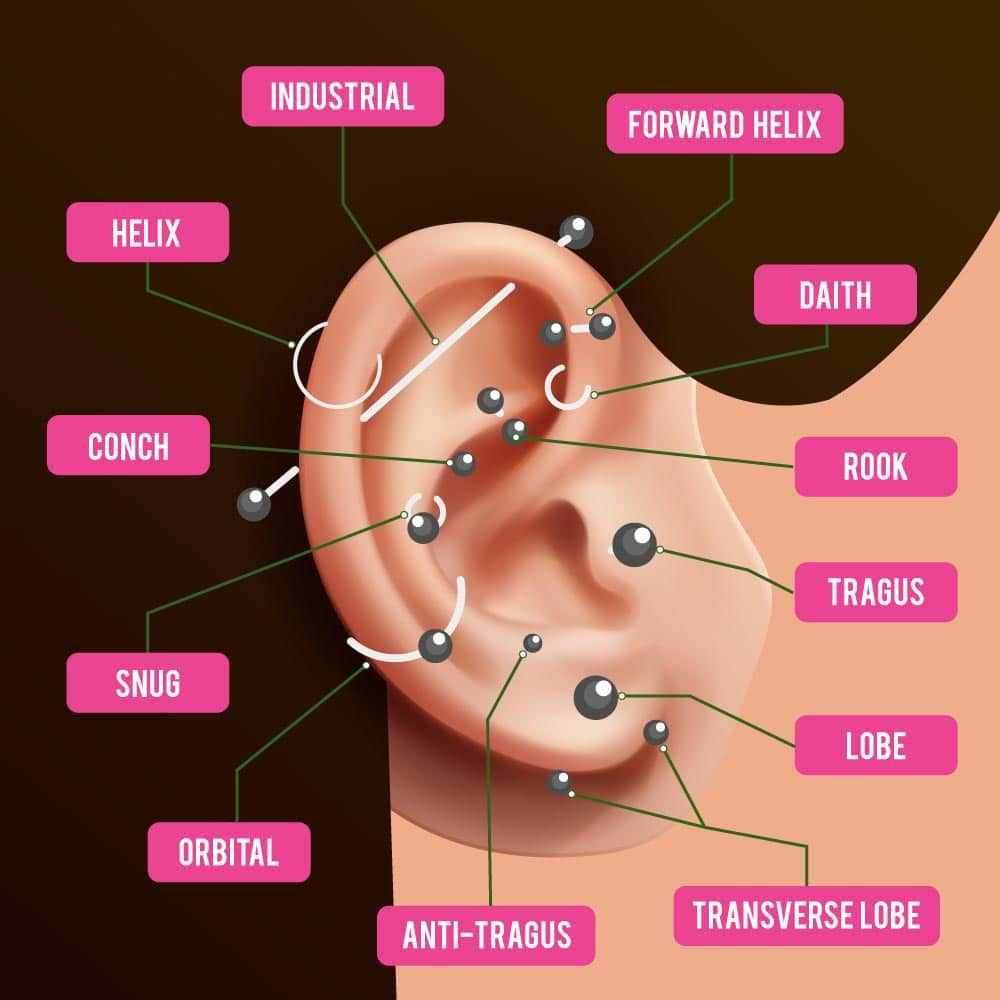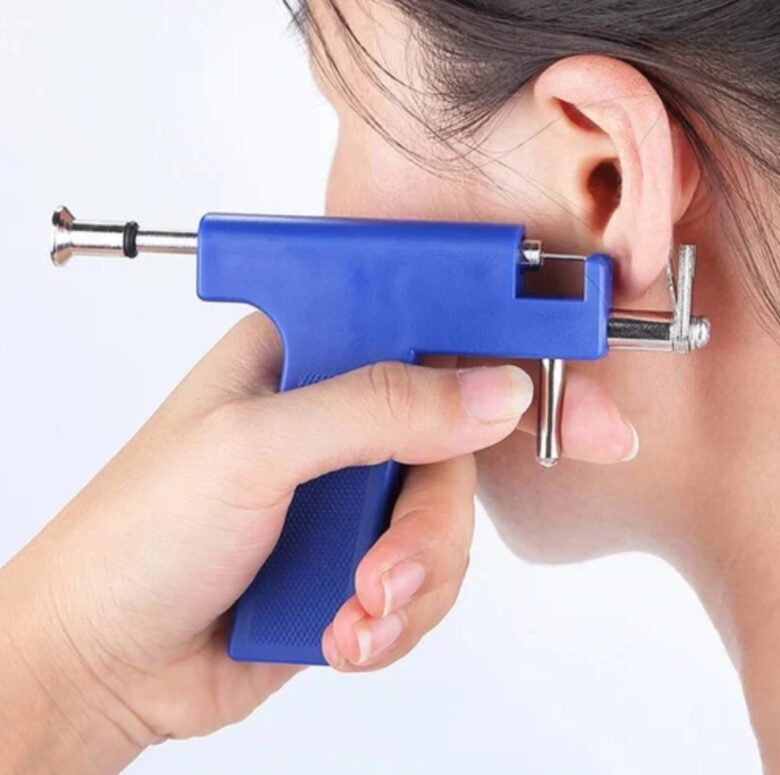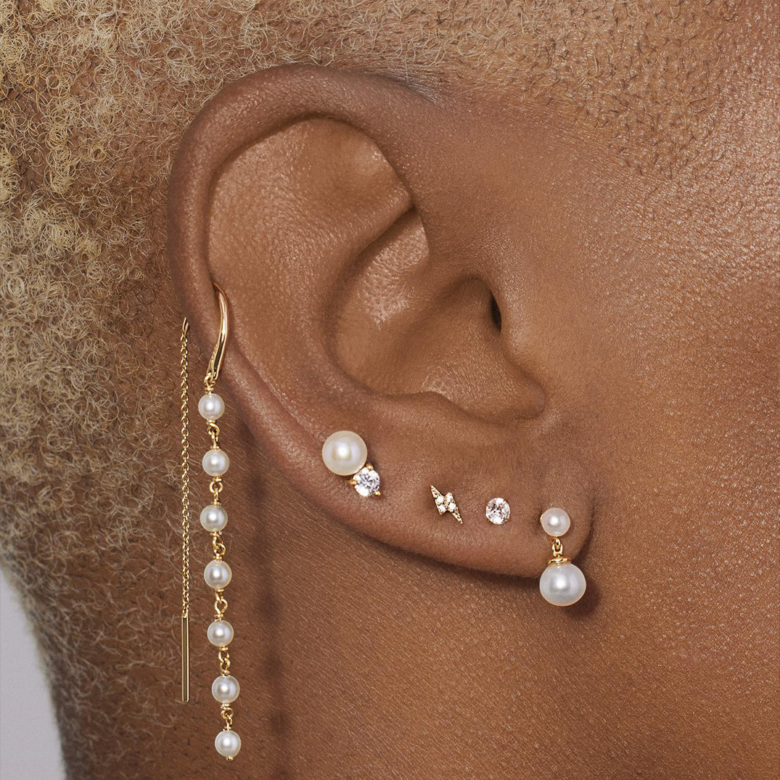Piercing one’s ears is a tradition that dates back millennia and is done for the sake of self-expression and ornamentation. In spite of the fact that more and more people want trendy and original piercings for their ears, it is extremely important to be aware of the possibility of experiencing discomfort and the many safety concerns that are linked with the process. The purpose of this article is to investigate the amount of discomfort that is often associated with the various types of ear piercings and to discuss important safety issues, such as the possibility of infection, allergic responses, and other consequences. Individuals may enjoy getting their ears pierced while limiting the amount of discomfort they feel and ensuring that the process is safe by educating themselves and adopting the essential safety steps.
Contents
A Guide To The Different Levels Of Pain Associated With Ear Piercings

Source: faruzo.com
Pain tolerance levels in different people can vary greatly, and everyone has their own one-of-a-kind approach to evaluating the seriousness of an ache or a wound. When you get your ears pierced, the amount of pain you feel depends on a lot of different things, such as where the piercing is exactly done, what kind of jewelry you wear, and how much pain you can handle.
Piercings Of The Earlobe: Earlobe piercings are often regarded as the form of ear piercing that causes the least amount of discomfort. Because of its fleshy and delicate nature, the earlobe is less sensitive than other parts of the ear, which means that most people will only experience little discomfort.
Piercings In Cartilage: Piercings in cartilage locations, such as the helix, tragus, conch, and rook, can be more painful than other types of piercings because cartilage tissue is thicker and less malleable than other types of tissue. When opposed to earlobe piercings, cartilage piercings are often associated with a more intense level of discomfort and may require a longer period of time to recover from.
Piercings Of The Daith And The Inner Ear: Piercings of the inner ear, such as the daith, snug, and anti-tragus, can cause a level of discomfort that ranges from mild to moderate. This is because these locations contain nerve endings. The degree of discomfort that one experiences may differ from person to person based on their unique anatomy and level of sensitivity.
Concerns Regarding The Practice Of Ear Piercing

Source: indiamart.com
When considering getting any sort of piercing done on your body, but especially on your ears, the first thing you should think about is how safe the procedure will be. To guarantee that the piercing procedure is carried out without incident, it is necessary to address a number of the standard safety considerations that are linked with it.
Infection Risks: Ear piercings are associated with a higher risk of infection than almost any other consequence. The introduction of germs into the piercing site can occur if unsterilized equipment is used, inappropriate aftercare is performed, or inadequate hygiene habits are followed. If you don’t want to get an infection, you must have the piercing done by a trained professional who uses clean tools and carefully follow the aftercare instructions.
Allergic Reactions: The metals that are utilized in ear piercing jewelry can, in some persons, produce allergic reactions. Nickel in particular is a common allergen in this context. The nickel reaction is the one that occurs most frequently. Redness, itching, swelling, and even blistering are some manifestations of this condition. Choosing hypoallergenic jewelry manufactured from materials such as surgical-grade stainless steel, titanium, or gold might help lessen the likelihood of allergic responses, especially if the jewelry is of high quality and hypoallergenic.
Keloids And Hypertrophic Scarring: Keloids and hypertrophic scarring are both overgrowths of tissue that can happen during the healing process of ear piercings. Keloids are more common than hypertrophic scars. Scar tissue can form elevated, thicker regions that are sometimes itchy, painful, and unappealing from a cosmetic standpoint. If you wish to limit the risk of developing a keloid scar, it is essential to avoid causing the piercing site any unnecessary trauma and to follow the aftercare advice to the letter. Keloid scars may be quite painful.
Nerve Damage: Piercings in some regions, particularly those involving cartilage, present a modest risk of nerve injury if they are not performed by an experienced expert. This is especially true for piercings in areas where cartilage is involved. Numbness, altered feeling, or other neurological issues can be the result of damaged nerves, whether the damage is transient or permanent. Finding a qualified piercer with a good reputation and experience in the kind of piercing you want can help reduce the likelihood of adverse effects.
Hematomas And Internal Bleeding: It is not unusual for there to be some blood involved in the piercing procedure. Extremely rarely, the patient may experience severe hemorrhage or the formation of a hematoma, which is a localized collection of blood. Following the guidelines for aftercare, using correct piercing technique, selecting jewelry of the appropriate size, and maintaining proper hygiene will help reduce the likelihood of severe bleeding or the formation of a hematoma.
Finding Your Unique and Perfect Fit
So now that we discussed the ear piercing chart, it’s time to help you find the right ear piercing to fit your style. With so many options available, it can be overwhelming to choose the right ear piercing for your comfort and preference. Getting an ear piercing is a personal choice, and there’s no right or wrong answer.
So how do you choose the perfect fit for you? Here are a few factors to consider:
1. Personal Style
Think about your personal style and the image you want to project. Are you more into minimalistic or bold jewelry? Consider how the piercing style aligns with your overall aesthetic.
2. Comfort and Healing
Some ear piercing styles take longer to heal or be more prone to irritation. If you have sensitive skin or a low pain tolerance, it’s essential to choose a piercing style that suits your comfort level.
3. Ear Anatomy
Everyone’s ear anatomy is unique. Certain piercing styles may not be suitable for your ear shape or cartilage structure. Consult with a professional piercer who can assess your ear and provide recommendations.
4. Jewelry Options
Consider the type of jewelry you can wear with each piercing style. Some styles allow for more versatility, such as stacking multiple earrings, while others may limit your options.
Conclusion

Source: cosmopolitan.com
In order to have a pleasant and risk-free experience with ear piercings, it is vital to be aware of the possible levels of discomfort that may be experienced and to address any safety issues that may arise. Individuals’ capacities to feel pain might vary, but being aware of the overall levels of discomfort connected with the various forms of ear piercings can assist them in making more educated choices. In addition, giving safety precautions a higher priority, such as selecting skilled piercers, using sterile equipment, following adequate aftercare instructions, and selecting hypoallergenic jewelry, can dramatically minimize the risk of infections, allergic reactions, and other potential consequences. Individuals may minimize discomfort and ensure a safe journey toward self-expression by establishing a balance between aesthetics and safety when it comes to getting their ears pierced. This allows them to enjoy getting their ears pierced while also maximizing the potential for self-expression.
